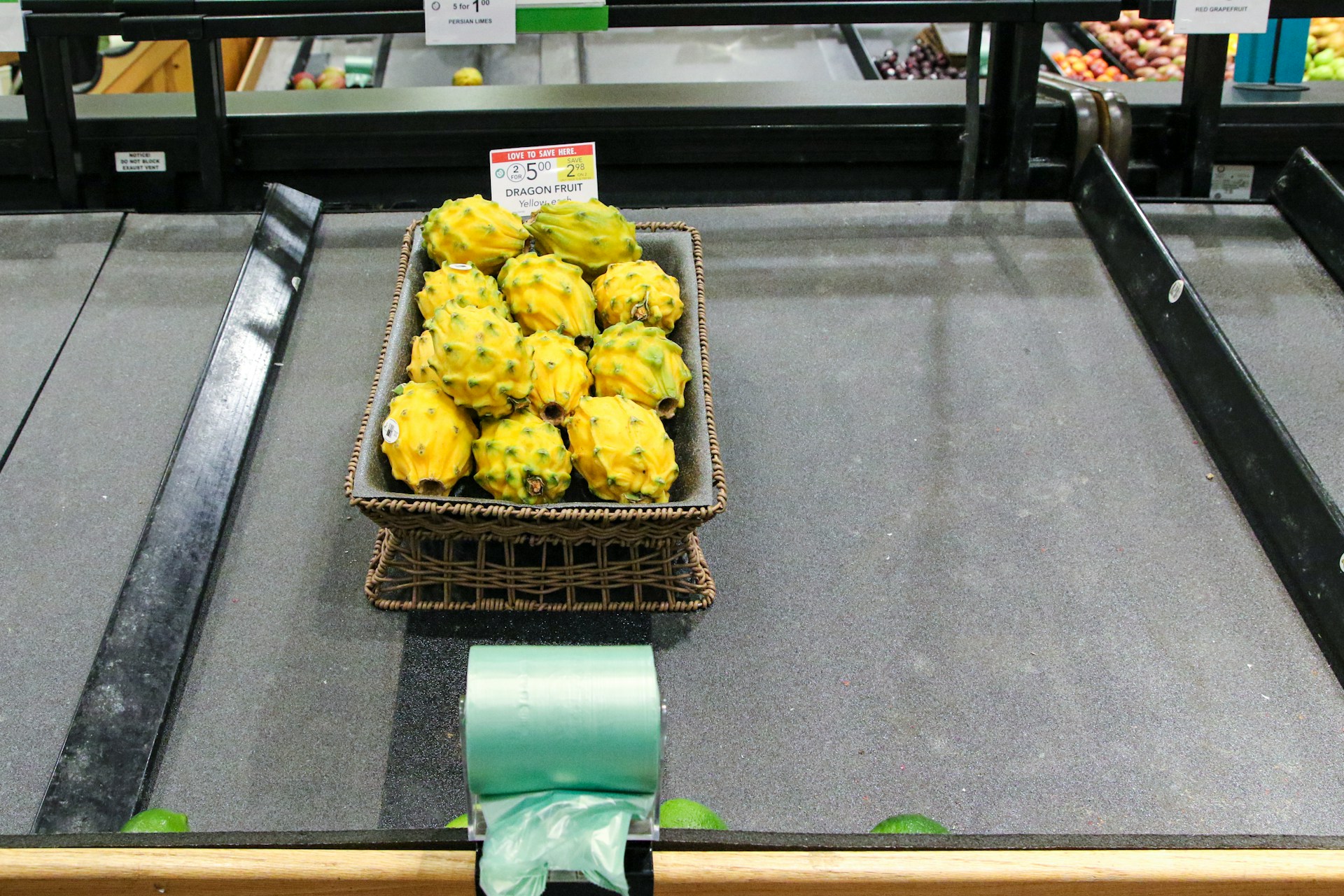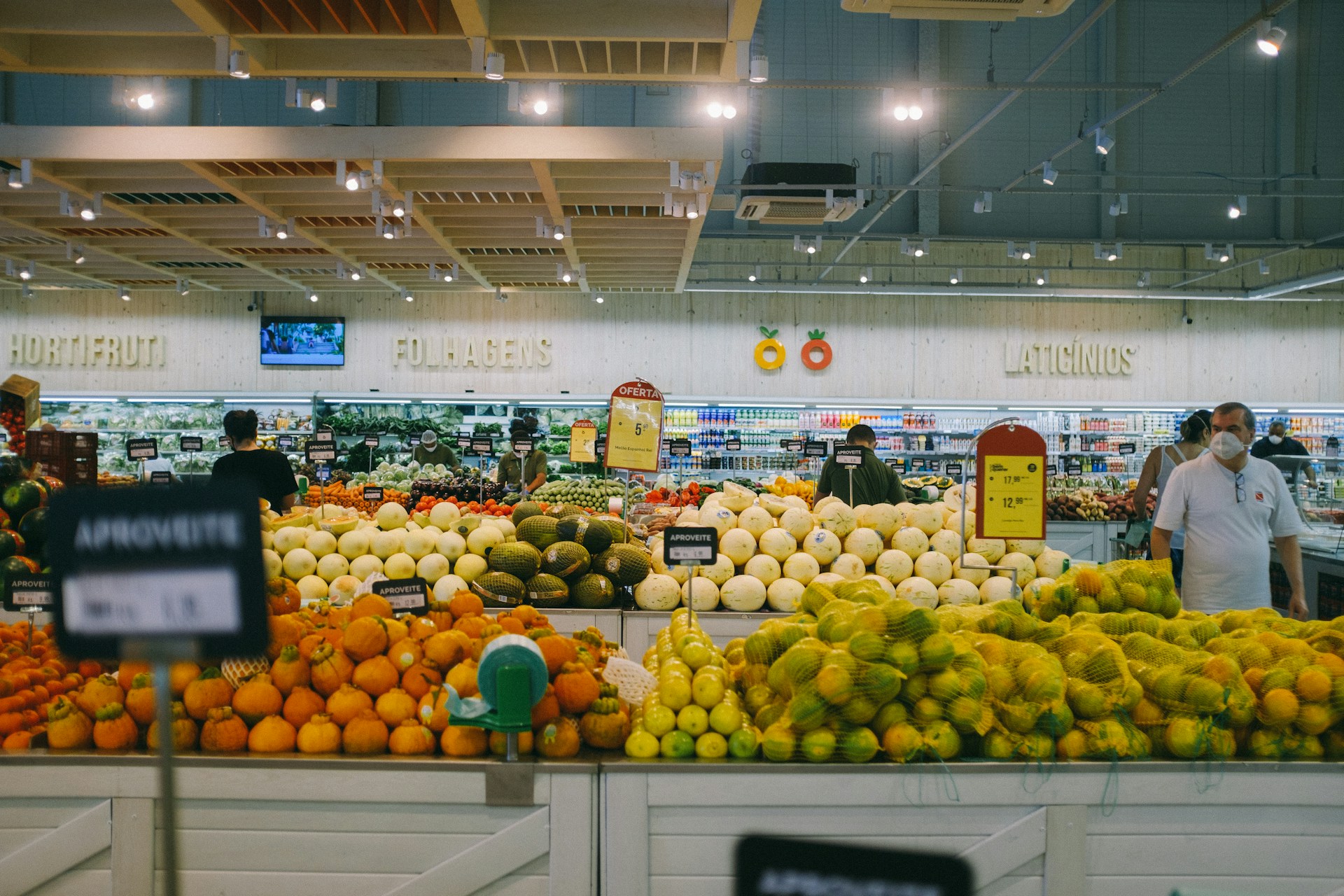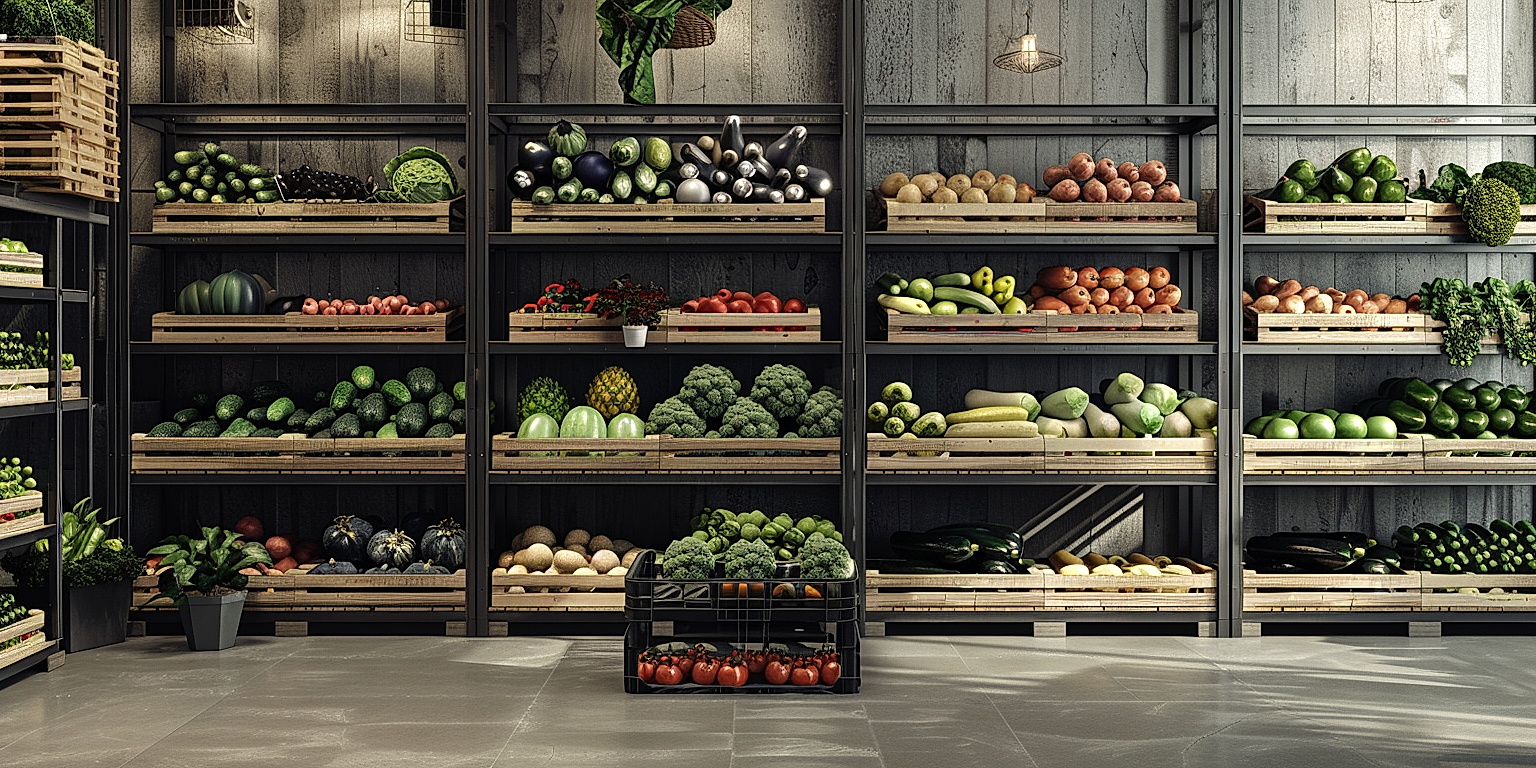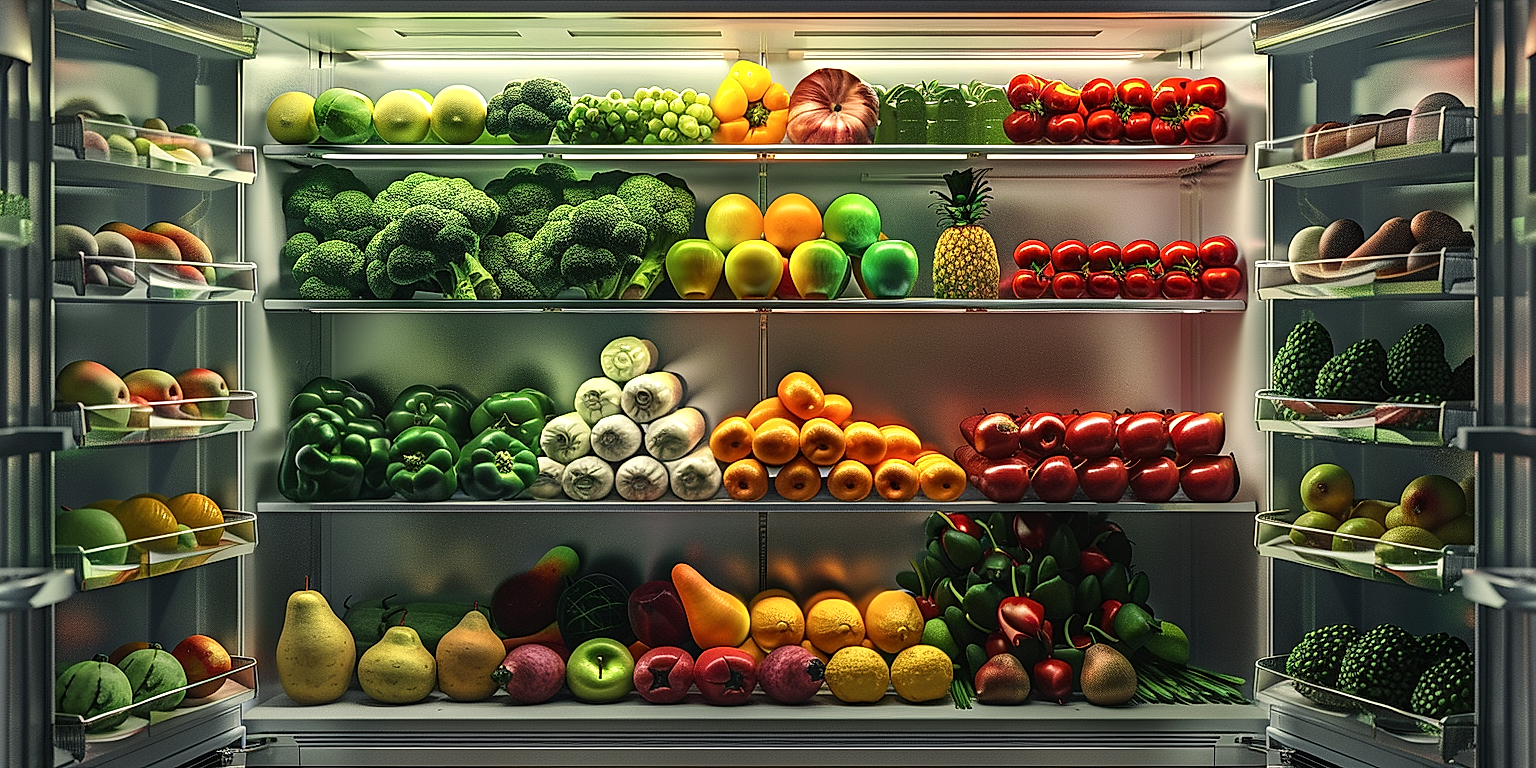In the highly competitive world of food retail, fresh produce plays a crucial role in attracting discerning consumers.
Nevertheless, the perishable nature of such products presents a formidable challenge for retailers.
Enhancing shelf life has long been a primary concern in order to minimize waste and sustain profitability.
Recent developments in packaging technology have offered promising solutions to this problem.
Through innovative design and advanced materials, it’s now possible to significantly prolong the freshness of fruits, vegetables and other perishables.
Such advancements are not only transforming retail operations, but also contributing to global efforts in reducing food waste.
Contents
- Packaging Innovations To Enhance Produce Shelf Life
- 1. Edible Coatings for Fruits and Vegetables
- 2. Vacuum Packaging for Minimal Oxygen Exposure
- 3. Modified Atmosphere Packaging (MAP) Technology
- 4. Resealable Packaging for Maintaining Freshness
- 5. Active Packaging to Extend Shelf-life
- 6. Intelligent packaging for monitoring freshness.
- 7. Antimicrobial Packaging Materials
- The Bottom Line
Packaging Innovations To Enhance Produce Shelf Life
1. Edible Coatings for Fruits and Vegetables
Edible coatings on fruits and vegetables are emerging as a revolutionary concept for minimizing food waste and extending the shelf life of these perishable produce.
These coatings are typically food-grade substances, derived either synthetically or from natural resources, acting as a barrier between the product and its surrounding environment.
Edible coatings have been found to be effective in reducing moisture loss and retarding the degradation processes associated with aging and ripening.
These coatings can provide a semi-permeable barrier to the passage of gases like oxygen and carbon dioxide, slowing down the respiration process of the produce, which in turn ensures a longer shelf life.
The application of edible coatings can also enhance visual appeal of the fruits and vegetables, aiding in retaining their fresh and natural look for a longer duration.
Through careful selection of ingredients, these coatings can be tailored to suit specific needs or produce, ensuring optimal performance in real-world scenarios.
Manufacturers can incorporate antimicrobial, antioxidative or other functional ingredients into these edible coatings, adding an additional layer of protective features.
Edible coatings prove beneficial by reducing the necessity for refrigeration, which makes it a sustainable solution for extending the life of perishable items.
Furthermore, it significantly reduces the dependency on synthetic packaging materials, grappling with the problem of packaging waste.
Coatings made from naturally derived substances, such as proteins, polysaccharides, and lipids are biodegradable, edible, and non-toxic, further promoting the safety aspect of this approach.
However, despite all the advantages, there are technical challenges associated with the commercial implementation of edible coatings.
The uniform coating application on a mass scale remains to be a significant hurdle in the effective utilization of this technology.
Additionally, legislative hurdles also exist as laws and regulations for edible coatings vary substantially across different geographies.
Yet, it’s undeniable that with ongoing research and developments, the potential for widespread adoption of edible coatings seems probable.
Many food giants have already started investing in this technology as a part of their sustainable packaging initiatives.
Thus, edible coatings offer an innovative, eco-friendly and viable option to traditional packaging methodologies, and are set to redefine the packaging sector, addressing both shelf-life and environmental concerns.
2. Vacuum Packaging for Minimal Oxygen Exposure
One of the most effective methods employed in the preservation of fruits and vegetables is vacuum packaging.
This technique involves removal of air from the packaging before the product is sealed, reducing the oxygen content significantly.
The primary objective of vacuum packaging is to minimize oxygen exposure, thereby slowing down the oxidation process that can lead to spoilage.
As a result, it has been found to enhance shelf life significantly, allowing for prolonged storage without any compromise on quality or taste.
It’s important to note that vacuum packaging not only prevents the growth of microorganisms that lead to decay, but also maintains the original color, texture, and flavor of fresh produce.
Moreover, by minimizing oxygen exposure, vacuum packaging also hinders the growth of aerobic bacteria, further contributing to increased shelf-life.
Another advantage of vacuum packaging over traditional methods is that it doesn’t rely on chemical preservatives, which can impact the nutritional value and flavor of the food.
Yet, despite its numerous benefits, vacuum packaging does present some challenges that need to be overcome for optimal results.
For instance, delicate fruits and vegetables might get crushed or bruised during the vacuum process, which could lead to damage and accelerated spoilage.
Also, proper sealing of the package is a critical factor to ensure the effectiveness of this method.
The seal has to be strong enough to prevent the entry of air, but at the same time, it shouldn’t be so tight as to damage the product.
Therefore, it requires careful handling and efficient packaging machinery that can adjust the level of vacuum according to the type of produce being packed.
Another notable challenge is the potential for anaerobic bacteria growth, which can occur if the packaging is left unopened for extended periods.
Despite these challenges, vacuum packaging remains an indispensable tool in the food industry, offering an effective solution for enhancing the shelf life of fruits and vegetables.
Innovation and improvements in packaging technology are continually being explored to address these issues and increase efficiency even further.
Overall, when implemented correctly, vacuum packaging serves as a reliable method for reducing oxygen exposure and increasing the shelf-life of produce, thus playing a critical role in reducing food waste and contributing to sustainability in the food supply chain.
3. Modified Atmosphere Packaging (MAP) Technology
Modified Atmosphere Packaging (MAP) is one of the most effective ways to extend the shelf life of fresh produce.
MAP technology works by altering the internal environment of the packaging. This is designed to slow down the ageing process and decrease the rate of decay.
This innovative technology is a modification of the atmosphere within the food packaging to preserve its freshness for a longer period compared to when traditional methods of packaging are employed.
MAP technology can create ideal conditions for the specific produce being packaged.
It achieves this by carefully controlling the composition and proportions of gases inside the packaging. This might include oxygen, carbon dioxide, nitrogen, and others.
The exchange of gases in MAP technology is meticulously calibrated in order to create the perfect environment to extend the freshness and quality of the produce.
For example, in the case of certain fruits and vegetables, reducing the oxygen concentrations while increasing the carbon dioxide proportion within the packaging can significantly reduce the speed of the ripening process.
Moreover, this type of packaging can also help in improving the visual appeal of the product. Because the oxygen levels are controlled, there will be less browning and wilting, keeping the produce looking fresher for longer.
Another bonus is that MAP technology does not have any impact on the taste, texture, or aroma of the food. The primary goal is preservation without altering the inherent qualities of the produce.
This packaging method is therefore highly beneficial for suppliers and for consumers. The extended shelf life of the produce means less waste and lower expenses for everyone involved.
Consequently, these substantial benefits have led to a growing adoption of MAP technology in the agriculture and food industry.
However, MAP technology is not a one-size-fits-all solution. The proportions of gases need to be fine-tuned for each specific type of produce. It’s not as simple as applying the same formula to all types of fruits and vegetables.
Specific scientific research and testing are necessary to obtain the right map for each type of food being packaged. This makes the implementation of MAP technology a sophisticated and highly specialized process.
Overall, Modified Atmosphere Packaging technology is a major breakthrough in preservation methods, making a significant contribution to enhancing the shelf life of fresh produce.
4. Resealable Packaging for Maintaining Freshness
Resealable packaging is a valuable innovation in the world of food packaging, offering increased convenience and capabilities in retaining freshness.
A well-known form of resealable packaging is the zip-top bag, which is frequently used in the storage of both fresh and processed foods.
The benefits of resealable packaging are manifold; they create an air-tight seal that minimises exposure to external environmental factors, thus maintaining the initial quality of the produce.
Additionally, consumers are drawn to the flexibility offered by resealable packages as they can easily access the food whenever required and then reseal the pack, making it highly convenient.
Moreover, resealable packaging is a definite step towards reducing food waste since leftovers can be conveniently stored for future consumption.
From a sustainability perspective, resealable packaging solutions can lead to reduced packaging waste, as one package can be used multiple times before disposal, compared to single-use packaging.
Furthermore, advancements in packaging technology have led to the development of resealable packaging with built-in freshness indicators, offering extra guarantees to consumers regarding the freshness of the produce.
Some companies are even developing resealable closures that offer odor control – an additional layer of protection for the freshness of the produce inside.
Resealable packaging could be especially beneficial for produce that is consumed over a span of time, like berries or salad greens.
The use of specialized materials in resealable packaging can also help in absorbing harmful gases like ethylene, which are released by certain fruits and vegetables and can accelerate spoilage.
However, despite all the advantages, there are certain challenges that need to be considered as well, such as the potential for increased production cost.
A significant downside might be the increased materials used in creating these packages which could have environmental implications.
The implementation of the resealable packaging thus requires a careful balance of benefits and drawbacks.
What is certain, though, is that resealable packaging represents a significant step forward in the quest to increase the shelf life of fresh produce.
Overall, whether used independently or in combination with other packaging technologies, resealable packaging has the potential to play a significant role in maintaining the freshness and enhancing the shelf life of produce.
5. Active Packaging to Extend Shelf-life
One of the most innovative packaging solutions engineered to prolong the freshness of fruits and vegetables is active packaging.
This packaging technique mainly denotes the materials or approaches that, beyond providing a physical barrier, interact biologically or chemically with the contents of the package.
This process significantly increases the product’s shelf-life, thereby reducing food wastage and increasing profitability for growers and retailers.
This system makes use of absorbers, emitters, and desiccants contained in the packaging material to modify the internal atmosphere of the assembly.
These active components can either absorb or release substances within the package to inhibit spoilage mechanisms.
The use of oxygen scavengers in the active packaging is a common practice, especially for fruits.
This is because oxygen is a significant contributor to the ripening and decay process in many fruits, thus eliminating it from the packaging environment can significantly delay these processes.
Moreover, active packaging can utilize antimicrobial agents to inhibit bacterial growth that can otherwise spoil the fruits or vegetables or cause unwanted changes in their taste and smell.
Another remarkable technology in active packaging is the use of bioactive compounds like natural plant extracts.
These compounds release substances into the packaging that can have various beneficial effects, such as providing additional antioxidants that can further slow the ripening process.
The choice of compounds used can often be personalized to match the specific requirements of the produce being packed.
For instance, the use of ethanol emitters can be very effective for packaging ripening fruit like bananas or avocados, as these fruits are sensitive to ethylene, a naturally occurring hormone that speeds up ripening.
The release of ethanol gas within the packaging can block or delay the action of ethylene, thereby prolonging the freshness of the fruits.
Active packaging technologies, therefore, have made it possible to significantly extend the shelf-life of a wide range of fruits and vegetables, making them a crucial tool in combating global food waste.
As research and development continue in this field, it is expected to see more innovative active packaging solutions that could further enhance the freshness and shelf-life of produce in the near future.
6. Intelligent packaging for monitoring freshness.
As the quest for packaging innovations in the food industry continues, intelligent packaging systems have been identified as a novel way to enhance the shelf-life of fruits and vegetables.
This type of packaging, aptly named intelligent, works to provide information about the freshness status of the product within.
These intelligent systems, by design, can judge the condition of a product through a variety of means – from sensing changes in temperature and gas composition within the package, to tracking biochemical reactions occurring in the foodstuff itself.
The primary value of these highly advanced packaging solutions lies in their fundamental purpose: through real-time data, they provide insights into the freshness of the product, aiding in the prevention of spoilage and the preservation of optimal quality throughout the product’s entire lifespan.
This system, in effect, presents consumer benefits beyond just freshness monitoring, but also quality control aspects such as timely alerts against potential problems like bacterial growth or enzymatic reactions which could affect the taste and texture of the food.
Intelligent packaging for fruits and vegetables usually comes equipped with indicators, sensors, or even data loggers, with the main aim being the delivery of real-time data about the product’s status.
As one of the major applications of modern technology in the fresh produce sector, intelligent packaging addresses one of the fundamental problems faced by both consumers and retailers in the food industry – the issue of wastage due to spoilage.
A fine balance is maintained between the product and its environment through constant monitoring within the package, maintaining freshness and extending shelf-life.
Not only do these packages extend shelf-life, but also work on improving consumer safety by monitoring and showing visible alerts when the product is no longer fit for consumption or when ideal storage conditions are not met.
Despite the sophisticated technology involved, manufacturers are working on making these intelligent packages accessible and user-friendly, conforming with standard packaging practices and market tendencies.
In the near future, the adoption of intelligent packaging systems with built-in freshness indicators will not only help in reducing food waste but also in contributing towards sustainable food practices.
Understanding the potential benefits that intelligent packaging for fresh produce presents, research is being ramped up and more resources are being allocated in this direction, in the hope to realise the full benefits of this innovative technology.
Despite being a relatively new concept, the intelligent packaging industry is bound to grow rapidly, fuelled by consumer interest in prolonged freshness, increased shelf-life, and concerns for food safety.
Evidently, the intelligent packaging offers a way forward in our constant battle against food waste and in ensuring high-quality fresh produce reaches the hands of the consumers.
7. Antimicrobial Packaging Materials
Antimicrobial packaging is one of the many groundbreaking advancements in the world of packaging technologies.
This form of packaging incorporates substances that kill or slow down the growth of microorganisms such as bacteria, viruses, and fungi.
It’s primarily used to extend the shelf-life of fresh fruits and vegetables by inhibiting the growth of microorganisms responsible for spoilage.
The use of antimicrobial packaging materials not only lengthens the shelf life, but also maintains the quality and safety of the produce, hence enhancing its acceptance and demand.
These materials come in various forms, including plastics, biopolymers, and even edible films, all impregnated with antimicrobial agents.
The agents used can be natural or synthetic.
Natural agents include plant-based compounds such as essential oils and extracts, while synthetic ones are chemically produced.
Irrespective of the origin, the key objective is to suppress the microbial growth and hence enhance the shelf-life of produce.
Not all fruits and vegetables require antimicrobial packaging materials; however, those susceptible to rapid spoilage vastly benefit from these technologies.
For instance, cut fruits and vegetables, or those bruised during handling, are often susceptible to microbial attack.
Antimicrobial packaging technologies, therefore, happen to be a need of the hour for these categories of produce.
This type of packaging not only increases the time before spoilage but also maintains the product’s integrity by slowing down the deterioration process.
Moreover, the use of such materials means that products need less preservative application, making them more natural and safer to consume.
This offers a dual benefit – it enhances shelf-life and consumer appeal.
While antimicrobial packaging has its benefits, it’s essential to note that the use of these materials must be well regulated and monitored.
Excessive use of antimicrobials is not good for health and the environment since some antimicrobial substances can be harmful if consumed in large doses.
Therefore, research is ongoing to develop more eco-friendly and safer alternatives for antimicrobial packaging.
Also, efforts are underway to make such packaging more cost-effective for wider adoption in the produce industry.
The Bottom Line
Innovative packaging methods are proving to be game-changers not only in maintaining freshness but also in extending the shelf life of fruits and vegetables.
Edible coatings could potentially revolutionize how our food is preserved, while the vacuum packaging technique offers a solution for minimum oxygen exposure, thus limiting spoilage.
Similarly, Modified Atmosphere Packaging technology and resealable packaging methods both uphold freshness and further delay deterioration.
Active packaging is promising in keeping our produce at their utmost quality for longer periods.
Meanwhile, intelligent packaging paves the way for real-time freshness monitoring, presenting a proactive measure against early decay of food.
Finally, the deployment of antimicrobial materials in packaging adds an extra layer of defense against degradation, all of which consolidates the holistic approach to sustainable and efficient food preservation.




